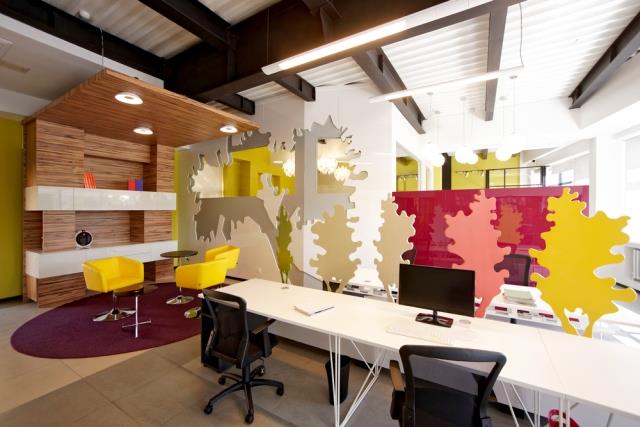Ideas are the new currency of modern economies and it is no more evident than in recent billion dollar idea success stories like Airbnb and Uber, which are now disrupting and even putting out of business, established industries.
Richard Andrews, Managing Director of Inspiration Office, says increasingly companies are putting emphasis on new ideas to grow their business and stand apart from the competition.
He says we live in an ideas age and businesses are recognising that fact, and “today’s offices must support the ‘cult’ of new ideas - and in comfort, of course”.
Andrews shares the biggest office trends expected in South Africa in 2018.
1. Idea centric offices
Because ideas are so important to the new economy in 2018, we expect to see more idea centric offices that enable creative thinking. Many people think creativity is just for creatives, but it should be facilitated and encouraged in all aspects working life as it helps all areas of business.
There is a misconception that creativity is a 'light bulb' moment but it's not.
Creativity is really a haphazard, tricky problem-solving process that should allow people to work in groups but also alone. Offices should therefore create spaces where people can work in a “creativity supporting” way.
This year, Andrews expects an even greater shift away from traditional ‘battery farm’ corporate workplaces to places that are more like creative studios. That means different kinds of workplaces that offer uninterrupted individual focus, developing ideas in a pair, generating solutions as a group, converging around ideas and allowing time for diffused thinking.
These different options allow the mind to wander.
2. Unconventional work area design
An extension of idea centric offices is the unconventional work area design.
These are not just for hipsters working at Google anymore. Unconventional work offices now offer meditation spaces, dressed-down conference rooms complete with sofas, bean bag chairs, vibrant colours and lots of room for fun and stress busting activities like ping pong or foosball.
Offices all over the world are adopting these new and unorthodox working and meeting spaces to attract young talent and make working spaces more fun and collaborative.
3. Homestyle comforts
We are receiving a growing number of requests to make South African offices more relaxed and “people-friendly” so people don’t feel like they are sitting in such a severe place.
Demand for home-style comfort design is a sign that employers are listening to the desires of their employees and figuring out new, fun ways to get them to stay at work longer. This design trend is all about making offices feel more comfortable or homelike.
4. Dynamic spaces
Dynamic spaces are another big trend. They are typically defined by lightweight and moveable furniture with wheels, doors to open extra space, moveable green wall dividers and wipe boards or chalk boards. They are moveable, constantly fluctuating, engaging and can transform from a space for company parties and activities, to traditional conference rooms or meeting areas.
Dynamic spaces offer the opportunity for businesses to be a lot more creative with their space. Businesses are constantly changing and becoming more flexible, allowing colleagues and staff to try new things in innovative ways.
5. Greenery and nature
More a long-standing design principle than a trend, this is not just about adding a few plants here and there around the office.
This goes much further by integrating nature through the building in the form of textures, patterns, plants and natural lighting. Being close to nature and living plants instils a greater sense of calm in offices. While not new, there is a strong increase in demand for green in the workplace.











